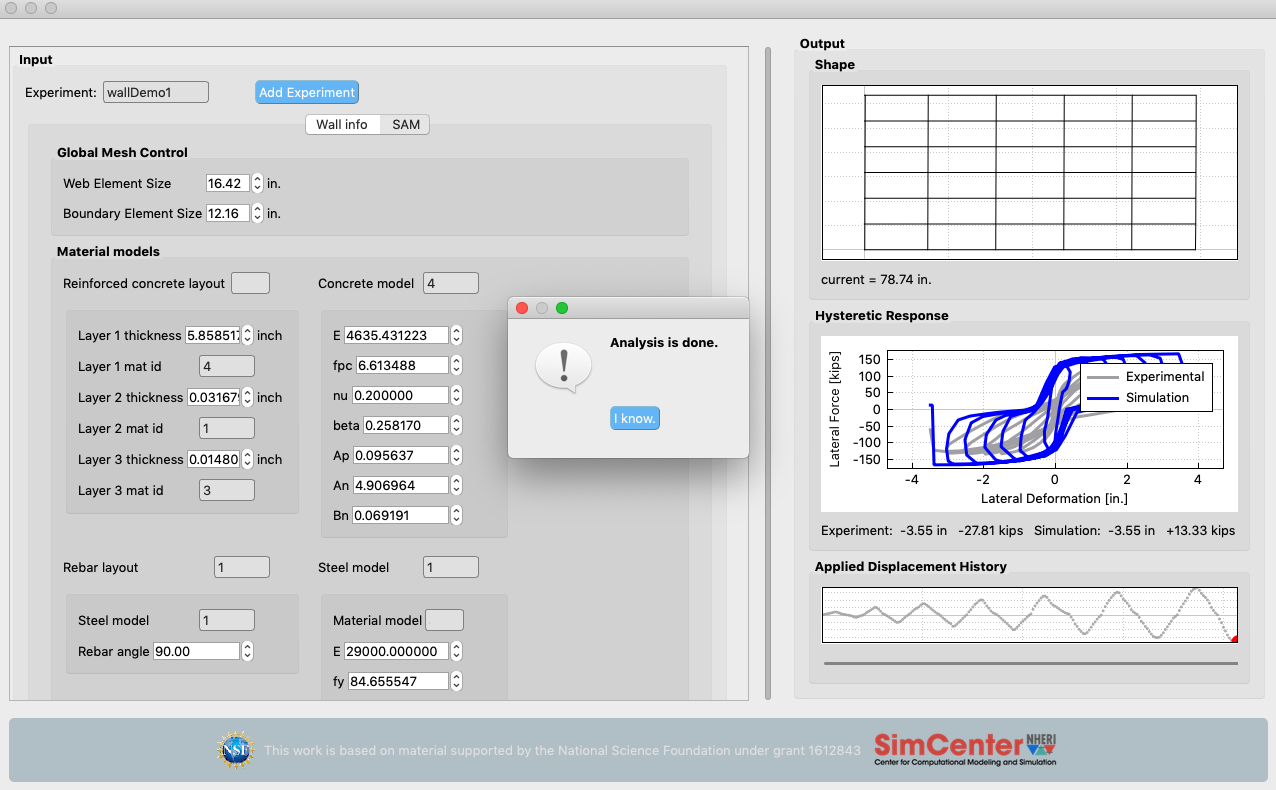SWIM is the acronym for Shear Wall Intelligent Modeling. The word "Intelligent" indicates this application is AI-enabled. Shear walls are commonly used lateral resisting systems in buildings. During large events, particularly seismic events, the buildings may experience shear failure of these walls. Capturing the behavior of individual walls to shear failure is critically important if one is to determine the response of such buildings to large magnitude events. This application is intended to educate users on how concrete shear walls should be modeled when performing numerical simulations of the entire building. This application will allow the user to explore how different modeling assumptions affect the response of a concrete shear wall element and how the simulated response compares with actual experimental data. Machine learning algorithms are inserted into the backend to help users choose reasonable parameters for the model. Allowing the user to validate their modeling assumptions is critically important for the user to gain competence in this area, as just producing hysteresis loops that look meaningful can be dangerously misleading.
Sample Results

Links:
How to cite:
Charles Wang, & Frank McKenna. (2019). NHERI-SimCenter/SWIM: Release v1.0.1 (v1.0.1). Zenodo. https://doi.org/10.5281/zenodo.3475481
Deierlein, G.G., McKenna, F., et al. (2020). A Cloud-Enabled Application Framework for Simulating Regional-Scale Impacts of Natural Hazards on the Built Environment. Frontiers in Built Environment. 6, 196. doi: 10.3389/fbuil.2020.558706.